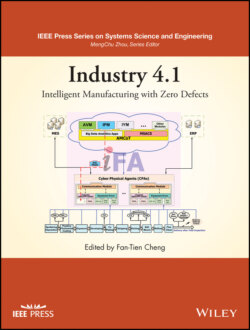Читать книгу Industry 4.1 - Группа авторов - Страница 23
1.2.1.4 Engineering Chain (EC)
ОглавлениеInternational technology roadmap of semiconductor (ITRS) proposed the concept of EC to cope with the problems aroused from design collaboration in the semiconductor industry in 2003. In the semiconductor industry, the EC was defined as a network of facilities and distributed services that performs device design, verification of design, manufacturing pilot run, assembly and test operations, yield improvements, and final release for mass production [11]. Figure 1.10 compares the SC and the EC in the semiconductor industry [14].
Figure 1.10 Comparison of SC and EC.
Source: Reprinted with permission from Ref. [14]; © 2010 IEEE.
In the mass‐production phase after a successful IC design, the SC manages the entire operation from order input to wafer delivery. On the other hand, in the product‐development phase, the EC plays the role of managing IC design operation from IC design to the release of mass production. Both the SC and EC management systems should operate efficiently within the new collaborative operation model among all stakeholders to complete IC design and IC manufacturing. However, the EC supports product development, while the SC supports mass production.
The novel EC component and the traditional SC component for inter‐company operation are combined with the intra‐company MES component and EES component to create a new comprehensive e‐Manufacturing scope in the semiconductor industry as illustrated in Figure 1.2. The proposed semiconductor e‐Manufacturing concept focuses not only on the SC O2D for timely and economical delivery of desired products [6, 7] but also on the e‐Manufacturing support to achieve a faster design cycle for reducing the EC T2M since some IC design cycles are longer than their corresponding mass‐production cycles [29].
Cheng et al. [11] also proposed the concept of an engineering‐chain‐management system (ECMS) to supervise the collaborations with EC partners and EC capabilities for shortening the T2M in the IC production process. An EC environment consists of numerous design partners that are allocated among different locations but working together to produce advanced IC design. Therefore, considerable engineering data exchange is inevitable. Each professional partner of the EC focuses on its professional work. The ECMS can support the operating efficiency of the collaborative team, including first design success rate enhancement, design cycle time subtraction, and design cost reduction. The ECMS supports the EC operation and engineering data exchange by providing a new system framework and comprehensive operating scenarios.
Coherent IC design operations among many heterogeneous companies are the operating model of the EC. Enormous quantities of data, including design files, mask data, process specifications, and yield data, need to be exchanged among all the members of the EC. Therefore, transparent information sharing is essential for significant design efficiency improvement and to assure the first‐pass tape out of an IC design.
To support the above EC operating scenarios in the ECMS architecture requires exchanging considerable engineering data. Although, there is no industrial standard for EC engineering‐data exchange as that for logistics data in the semiconductor industry, an ECMS framework is required to implement and fulfill the key requirements of the EC [9].
The authors adopted the new generation distributed object‐oriented technology with web services [15] as the enabling technology to propose the ECMS framework [11] that comprises many EC agents. As shown in Figure 1.11, five main companies, including the IC design house, IP/library house, masking house, foundry house, and assembly/test house, are consisted in the example ECMS framework. Notably, each company must possess an EC agent, which is in charge of the data exchange operations, to communicate with the other servers.
Figure 1.11 Engineering‐chain‐management system framework.
Source: Reprinted with permission from Ref. [14]; © 2010 IEEE.
